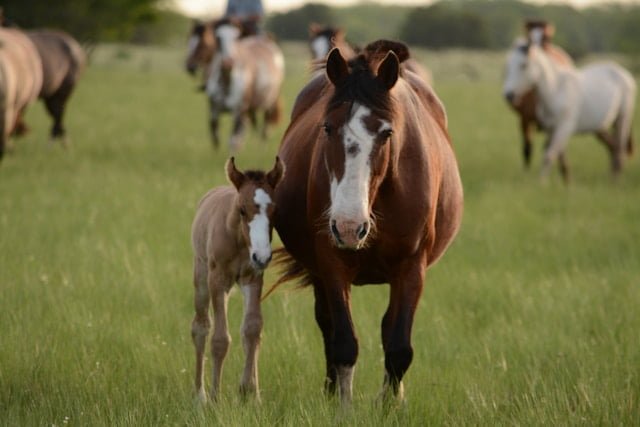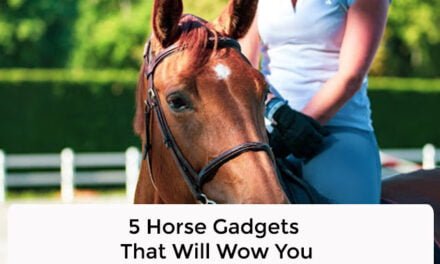
Have you ever looked at a horse flicking its ears back and forth and wondered what secret conversation it seems to be having? Or have you been puzzled by subtle signs like nostril flaring and tail swishing that suggest something below the surface?
Equine body language has an air of mystery about it that intrigues horse lovers. However, being able to decode these unspoken signals is incredibly valuable.
According to Downunder Horsemanship, understanding what your horse is “saying” through its body builds stronger bonds, improves communication, and makes training more rewarding for both horse and handler.
In this blog, we will demystify horse body language by exploring its most expressive features. You will learn to interpret ear positions, eye expressions, tail movements, and much more. Follow along for a complete guide to unraveling the nuances of equine expression for deeper connections.
Ears, Eyes, and Nostrils: Unveiling the Silent Conversation
For us humans, communication is roughly 55% non-verbal. You can assess a lot from a person’s hand movements, eye contact, and posture. Most of what the other person is thinking is revealed much before they utter a single letter.
The same holds for horses too. Every bodily gesture is a clear indication of what the animal is feeling at that point. A horse’s ears are the key to deciphering its emotions and intentions. If you see a horse with erect, rotating ears, understand that it is paying attention to its surroundings and wants to know more.
If the ears are pointed forward, it signifies interest in or concern about something. You might want to take a step back if you see your horse with a flattened back. This posture communicates anger or discomfort.
Moreover, ears flicking back and forth rapidly demonstrate heightened focus or anxiety. Subtle ear positioning reveals a spectrum of reactions.
Equine eyes also speak volumes with surprising range. Soft, blinking eyes accompanied by relaxed nostrils generally mean a calm state of well-being. Your horse is in a good mood!
Wide-open staring eyes paired with flared nostrils can indicate fear or surprise instead. Eyes half-closed during grooming or scratching exhibit contentment. Don’t stop; your horse is loving the belly scratching!
Understanding these gestures might take time. Be patient.
Much like ours, a horse’s breathing patterns mirror its psychological state. When calm, its nostrils will maintain regular expansion and contraction cycles.
But if it is nervous or in alert mode, its nostrils will expand in an abrupt “blowing” motion. This volatile flaring reflects disrupted breathing and spikes the heart rate.
If possible, you can always refer to various videos on horse training that are available online for guidance and in-depth knowledge. Imagine your horse’s ecstasy when you start reacting to all its physical and non-verbal cues appropriately.
Beyond the Head: A Full-Body Language Guide
A horse’s body language extends beyond their expressive ears and eyes to their overall posture and movement. Let us try to understand this in detail.
A lowered head with a semi-bent hind leg indicates calmness. In contrast, stiff legs with tense neck arching signify irritation or distress. In absolute contrast, muscle tightening around the hindquarters is a sign of clear danger.
Seek professional guidance in such situations, as they are warnings of explosive behaviors like bucking. In most cases, experts will separate this horse from its group to help it calm down.
Always keep an eye out for subtle, mundane movements. They can also provide great insights. Is your horse shifting its weight between its feet too often, during standing rest periods? While some adjustment is normal, excessive motion can indicate soreness issues that might merit further inspection.
Tail movement is one of the signs that is not too subtle and, hence, might be easier for you to notice. A relaxed, rhythmic swishing of the tail from side to side usually indicates contentment. Remember: the higher the swish, the happier your horse is.
A clamped tail held tight between the legs often signifies nervousness or fear. A high, tense swish can also signal apprehension.
Interpreting body language is like solving a puzzle–piecing together different signals for a full picture.
Connecting With Your Horse: From Understanding to Action
Witnessing a horse flick its ear nonchalantly might ignite curiosity in onlookers. But, for those who have learned to translate this silent language, the flick becomes an invitation or a glimpse into the horse’s soul.
The journey to decipher these subtle movements isn’t always smooth, but every decoded signal will strengthen the bond between the horse and you. A tail swish will no longer be a random twitch but a playful greeting, and pinned ears will become an opportunity for quiet comfort.
This unspoken conversation transcends words, forging a connection that whispers, “The deepest understanding often comes from listening with your heart, not your ears.”




